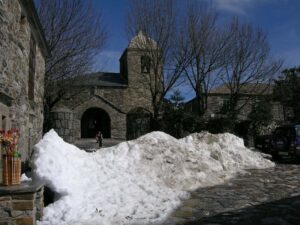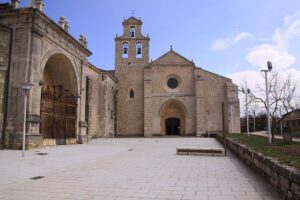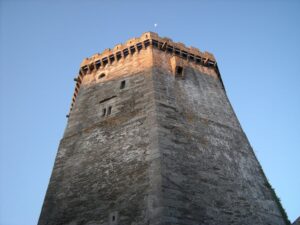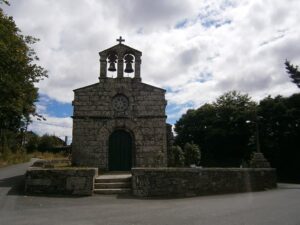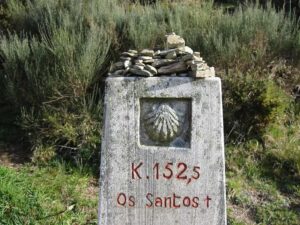
Throughout the centuries, the Camino de Santiago has been much more than a pilgrimage route. For thousands of walkers, it has represented an experience of inner transformation, a quest, and, in many cases, contact with the inexplicable.
The stories of apparitions, miracles, and spiritual legends mark its paths from the Middle Ages to the present day. Some are shared in late-night conversations with other pilgrims, while others remain inscribed in stone, on the walls of churches and sanctuaries.
This article explores the main routes of the Camino, highlighting those places where the supernatural has left its mark.
Índice de contenidos
- 1 The Camino as a Pathway of Spirituality and Mystery
- 2 Routes of the Camino de Santiago and Its Most Legendary Places
- 3 The Power of the Invisible in the Camino: Beyond Tourism
The Camino as a Pathway of Spirituality and Mystery
Since its origins in the Early Middle Ages, the Camino de Santiago has been surrounded by an atmosphere of devotion, symbols, and mystical experiences. The very discovery of the tomb of the Apostle Saint James in the 9th century was marked by a supernatural light that guided the hermit Pelayo to the forest of Libredón. This was, according to tradition, the first Jacobean miracle.
Over time, the network of paths leading to Compostela became filled with sanctuaries, relics, testimonies of healings, and legends passed down through generations. Many times, the line between faith and superstition blurred. But what remains is the powerful feeling that, on the Camino, there is something beyond the visible.
Today, many pilgrims do not identify with any specific religion, but they seek the same thing as centuries ago: answers, signs, transformation. And sometimes, they find much more than they expected.
Routes of the Camino de Santiago and Its Most Legendary Places
All the routes leading to Compostela hold episodes that have marked the collective memory. Below, we explore the most representative locations of each of them.
Camino Francés
The Virgin of Puy (Estella)
The legend goes that, in the 11th century, a mysterious light shone night after night over Mount Puy, near Estella (Navarre). The locals, puzzled, decided to investigate and found an image of the Virgin buried among the rocks. This apparition was interpreted as a divine sign, and the santuario de Nuestra Señora del Puy was built on that site.
This event strengthened the spiritual significance of this town as a mandatory stop on the Camino Francés. Even today, many pilgrims stop here not only to rest, but to contemplate the mystery surrounding this story of light and revelation.
The Virgin of the Camino (León)
According to tradition, the Virgin appeared in the 16th century to a shepherd named Alvar Simón Fernández and asked him to build a hermitage. To prove her authenticity, the Virgin gave him some stones that no one else could lift. This is a foundational miracle of one of the most important Marian sanctuaries on the Camino Francés.
The Eucharistic Miracle of O Cebreiro
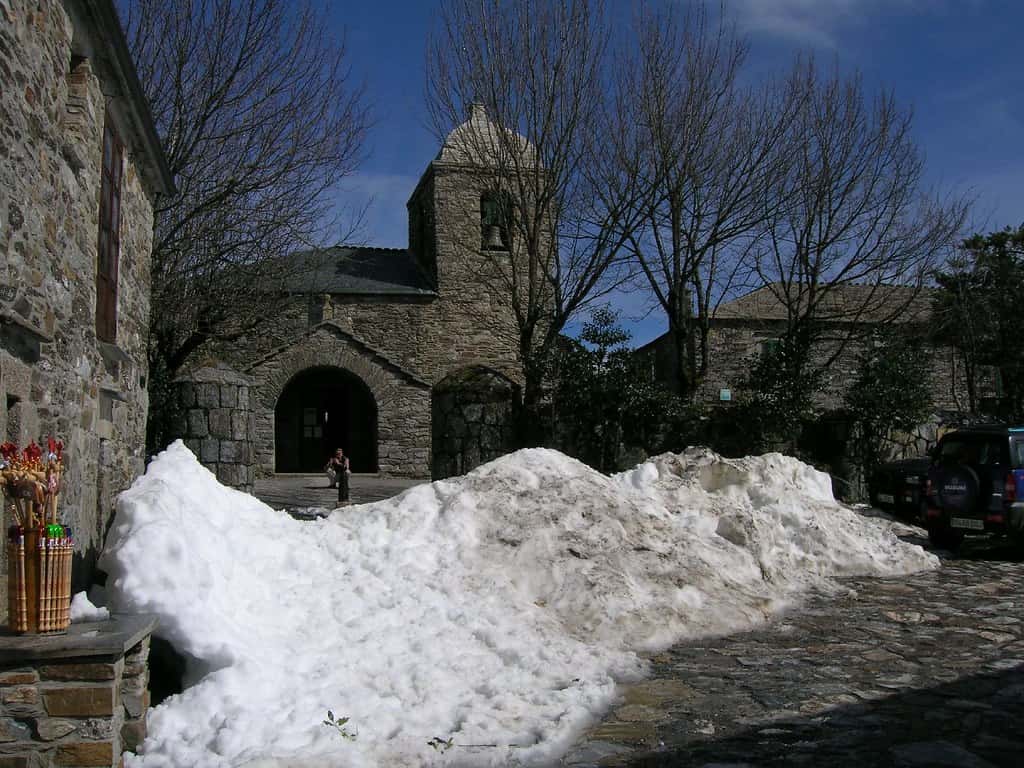
In the church of Santa María la Real de O Cebreiro, located in an area of great natural beauty, the memory of a miracle is preserved that continues to inspire believers and curious visitors alike.
On a cold morning in the 14th century, a priest was celebrating Mass reluctantly, thinking no one would attend. However, a peasant arrived exhausted after crossing the mountain. The priest dismissed him, but just at that moment the host turned into flesh and the wine into blood.
The chalice and the paten are still preserved in the temple, and the story was so powerful that even Emperor Charles V ordered the relics to be protected. Many link this event with the legend of the Holy Grail.
For those walking the Camino from O Cebreiro to Santiago and ascending to this site, the feeling of mystery is as tangible as the fog that envelops the village.
Camino del Norte
Santa María de los Ángeles (San Vicente de la Barquera)
On the Cantabrian coast, San Vicente de la Barquera offers more than just views of the sea. Here stands the hermitage of Santa María de los Ángeles, built on the spot where, according to tradition, the Virgin appeared to protect the sailors and pilgrims crossing the estuary.
According to legend, in the Middle Ages, the Virgin appeared to the local sailors in a boat in which only the Virgin of the Barquera travelled, without oars, crew, or sails, in which only the Virgin was aboard.
Since then, her image has been venerated in the chapel, and every 14th of April, the Fiestas de la Folía are celebrated to commemorate her apparition. You can visit it on the section corresponding to the Camino de Santiago from Santander to Gijón.
Zenarruza and the Raven’s Sign
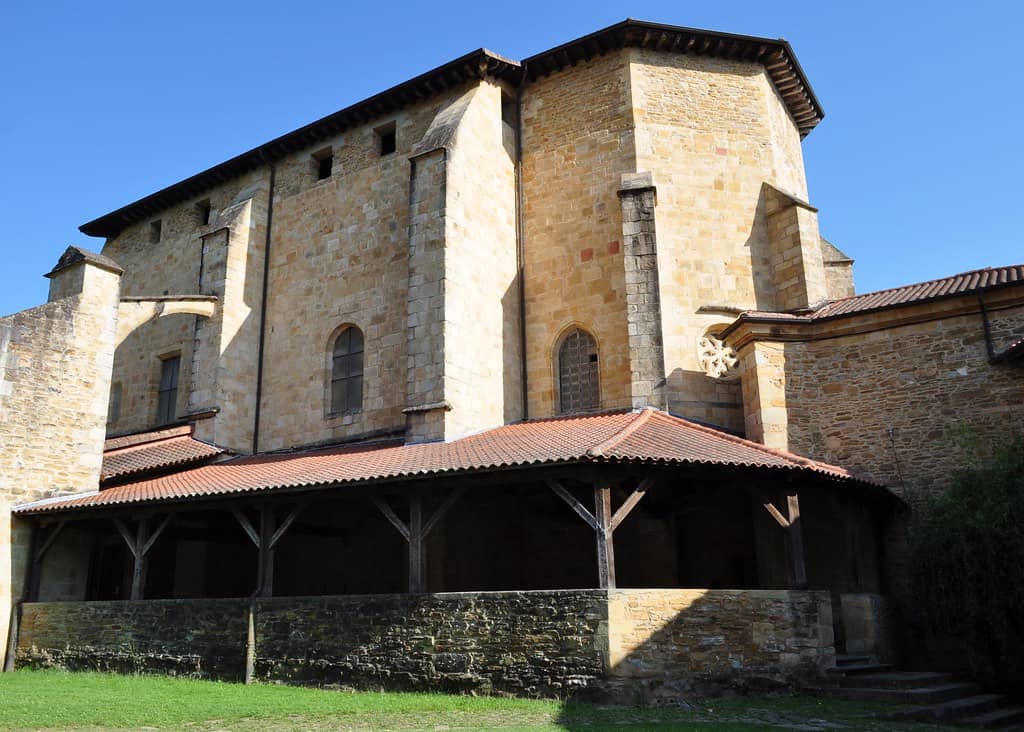
In the Zenarruza Monastery (Cenarruza, Biscay) stands on a site where, according to tradition, a divine sign manifested. On 15th August, the Feast of the Assumption, a funeral was being held at the church of Santa Lucía de Garay when, unexpectedly, a raven descended, took a skull from the ossuary, and flew to a nearby hill, dropping it at the top of the hill.
The locals interpreted this event as a message from heaven. The place where the raven dropped the skull was considered sacred. Over time, a hermitage was built on it, which eventually became a Premonstratensian monastery and later a Benedictine monastery, closely linked to the Camino del Norte.
Camino Primitivo
The Cathedral of Lugo and Perpetual Adoration
One of the most unique aspects of the Cathedral of Lugo is that the Blessed Sacrament remains exposed permanently, a practice unique in Europe. This practice originates from a series of visions that affirmed the constant presence of the divine in this place. Some accounts suggest an apparition of the Apostle Saint James encouraging the faithful to endure during times of invasion and darkness.
This mystical dimension makes the town a special point along the Camino Primitivo from Lugo to Santiago, where tradition merges with a living spirituality.
Santa María de O Cádavo
In O Cádavo, ancient stories speak of monks who experienced ecstasy and visions of the Virgin. Although many of these testimonies were lost over the centuries, the cult of Santa María del Real remains. For pilgrims crossing these mountainous landscapes, the feeling of solitude and spiritual elevation can be as intense as the ancient stories describe.
Camino Portugués
The Miracle of the Barcelos Rooster
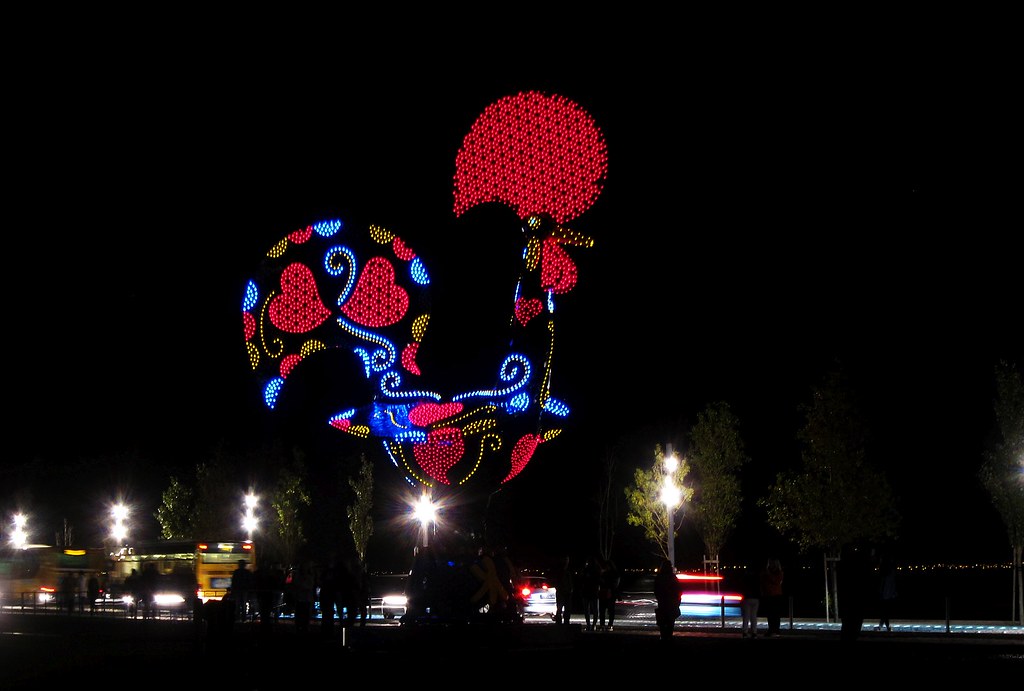
On the route of the Camino Portugués, one of the most emblematic stories —deeply rooted in the Jacobean imagination— is the legend of the Barcelos Rooster.
According to the tradition, a Galician pilgrim arrived here and was falsely accused of theft. He was sentenced to hang, despite proclaiming his innocence. When he asked to see the judge, he found him about to eat a roasted rooster. The pilgrim said: “My innocence is as true as this rooster will sing.”.
At that moment, as the man was being executed, the rooster —which had supposedly already been served— stood up and sang, proving the pilgrim’s innocence. Moved, the judge freed the man and, in gratitude, he ordered the construction of a “cruceiro” (wayside cross), which is still preserved in Barcelos. The rooster figure became a permanent symbol of the city.
Discover this special section of the Camino de Santiago Portugués from Oporto to A Guarda.
Our Lady of Nazaré (Portugal)
In 1182, D. Fuas Roupinho, mayor of the castle of Póvoa d’Obidos, was riding along the cliffs near Nazaré, wrapped in a thick fog. Suddenly, the horse stopped at the edge of a precipice over a hundred metres high. The rider was about to fall off the cliff.
At that moment, as he cried out: “Lady, help me!”, the Virgin Mary appeared above him, miraculously suspended in front of the horse, saving him. She then ordered the construction of a hermitage over the cave where her image was found.
Since then, the Santuario de Nossa Senhora de Nazaré has become a place of devotion. Even Portuguese explorers like Vasco da Gama and royalty, such as Queen D. Leonor, made pilgrimages there as a sign of gratitude.
Camino Portugués by the Coast
Santa Tegra and the Crossing of Legends
Mount Santa Tegra not only offers spectacular views of the Atlantic and the Miño river: it also holds centuries of Celtic, Roman, and Christian history. The local legend claims that a luminous figure appeared at the summit, some identify it as the saint, while others see it as an echo of ancient pagan cults. The carved stones and petroglyphs strengthen this connection to the ancestral.
The Virgin of La Lanzada and Fertility Rituals
Near the beach of A Lanzada, the remains of a medieval hermitage coexist with an ancient fertility ritual that has survived the centuries. Women seeking to conceive still come today during Marian festivities, bathing on the beach while reciting a special prayer. The blend of the sacred and the magical makes this place one of the most unique along the Galician coastline.
Discover it on the Camino from A Guarda to Santiago.
Vía de la Plata and Camino Sanabrés
The Dragon of Pico Sacro
The Pico Sacro, in Boqueixón (A Coruña), is linked to the Jacobean legend of Queen Lupa and the disciples of the Apostle. It is said that they were sent there to recover oxen for the burial of Santiago, and that a dragon lived in a cave on the mountain, symbolising evil. The disciples’ faith protected them from the monster and allowed them to continue their mission.
Over time, this place became associated with supernatural signs and became a passing point on the Camino Sanabrés.
Celanova: Mysticism Among the Walls
The Monastery of San Salvador in Celanova (Ourense) was a centre of culture and spirituality for centuries. San Rosendo, its most famous abbot, recounted visions from the beyond that marked the spirituality of the place. Even today, many visitors agree that the energy one feels there invites contemplation.
Camino de Finisterre and Muxía
The Pedra de Abalar
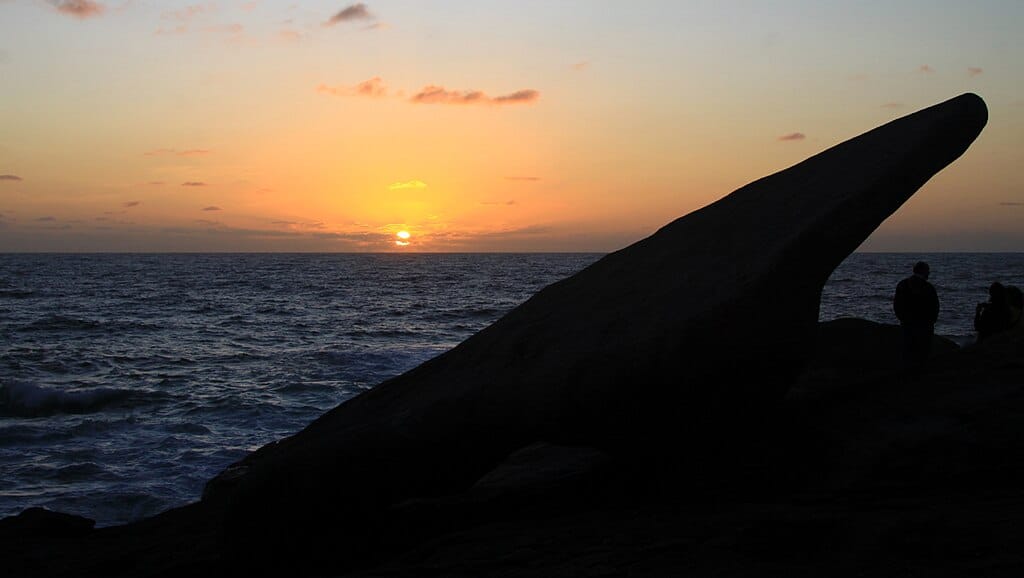
On the cliffs of Muxía, next to the Santuario da Virxe da Barca, lies one of the most unique and legendary rocks in Galicia: the Pedra de Abalar (also known as the “rock that sways”). It is a large granite slab with a curved shape that gently rocks when pushed, despite its large size and weight.
For centuries, this natural phenomenon has been interpreted as a supernatural sign. According to tradition, it was used as a sort of oracle or proof of innocence. If someone accused of a crime could make it sway, they were considered to have divine favour and thus were innocent. Conversely, if the rock remained still beneath their feet, their guilt was confirmed.
In addition to the moral judgement, the rock has been used for other symbolic purposes. For instance, the sailors of the Costa da Morte would come to it to ask for protection, and some traditions link it to fertility, similar to other sacred stones found across the European Atlantic. Some claim that if a woman sways on the stone, her fertility will be favoured.
The Pedra de Abalar is part of a unique symbolic ensemble: next to it are other “nautical” rocks (the Pedra dos Cadrís, the Pedra de Temón…), all related to the legend of the Virgin who arrived on a stone boat to encourage the Apostle Santiago. This setting, where nature blends with the sacred, makes Muxía one of the most mystical places along the entire Camino de Santiago.
The Power of the Invisible in the Camino: Beyond Tourism
The Camino is not walked only with your feet. It is also walked with the eyes of your soul, open to what is not seen but felt. The legends and miracles are part of the collective soul of these routes. They help explain why, even in the digital age, there are still those who embark on the adventure not for sport or tourism, but out of a need for something deeper.
If you are thinking about experiencing your own journey, you can consult companies for the Camino de Santiago to help you plan each stage without losing the magic of the journey.
The Camino de Santiago is not just a dirt trail, but a route of symbols, stories, and experiences that have been passed down for over a thousand years. The miracles, apparitions, and spiritual legends that dot its paths are not mere literary adornments: they are part of the essence that makes every step an opportunity for deep connection.

